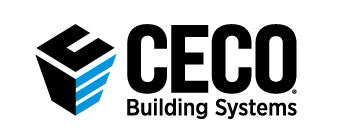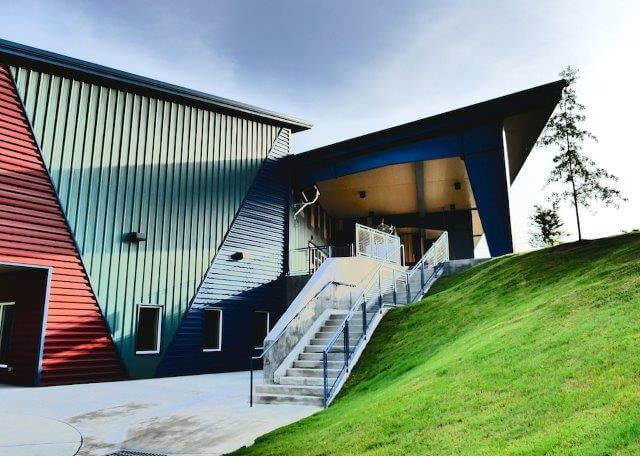Sustainability in Metal Buildings
Posted on December 14, 2017 by Ceco Building SystemsThe U.S. Green Building Council has developed the well-known LEED® rating system to recognize and certify buildings that are “green” or sustainable. The current iteration of this popular system is LEED version 4 (LEED v4), which applies to a range of building types. In addition to the general New Construction standard, there are also specific standards for Core and Shell building development, Schools, Retail, Data Centers, Warehouses and Distribution Centers, Hospitality, and Healthcare. All of these categories are widespread building types, but they are also all excellent candidates for construction using metal buildings.
How can metal buildings be used to help contribute to earning LEED credits and ultimately certification at the certified, silver, gold, or platinum levels? There are actually multiple ways based on the LEED v4 categories and criteria.
Sustainable Sites (SS)
Because they’re shop-fabricated, metal building systems allow field assembly using a minimal work area, which can also mean less disruption of natural areas and less potential for erosion. Once the building is in place, metal roofing, having a high solar reflectance and SRI, can be installed. Having a roof with a high solar reflectance index applied on the appropriate roof slope assists with achieving points for heat island reduction according to the criteria and calculations in LEED v4.
Energy and Atmosphere (EA)
Metal buildings can be designed and constructed to create an energy-efficient building enclosure to satisfy both the prerequisite and credit portions of the LEED Energy and Atmosphere category. The Metal Building Manufacturers Association (MBMA) publishes an Energy Design Guide for Metal Building Systems, available at www.mbmamanual.com, which can help in this process. Using resources like this, designers and installers can produce a building that has effective insulation, reduced air leakage, high-performance windows and doors, and coordinates with the foundation construction to achieve very favorable energy performance. Further, a metal building with a properly sloped roof can also be the ideal base to support solar panels that can provide an onsite source of renewable energy for the building to capitalize on. All of these factors can be used to earn LEED points across several several sections of this EA category.
Materials and Resources (MR)
A prerequisite for any LEED building is to reduce the amount of construction and demolition waste by recycling, recovering, or reusing building materials. Since metal buildings are shop-fabricated to suit a particular project, there is very little waste to begin with. Any excess or scrap metals, particularly steel and aluminum, are readily and easily recyclable.
Looking to the bigger picture, LEED v4 recognizes efforts to address the impacts of materials over their full life cycle, including materials used in metal buildings. The MBMA has taken the lead on preparing an industry-wide Life Cycle Assessment (LCA) protocol that can be used to support achieving points for this MR credit. The LCA includes primary structural steel frames and secondary structural steel (purlins and girts), along with roof and wall products used in metal buildings. MBMA has also prepared Environmental Product Declarations (EPDs) based on the LCA and industry-wide product category rules. By using this information, the environmental impacts of metal buildings can be determined from the extraction of raw materials through manufacturing and shipping (“cradle to gate”). The fact that steel products of all types contain a significant percentage of recycled material, and can be again recycled at the end of the service life of the building, contributes in producing favorable LCA results.
Indoor Environmental Quality (EQ)
LEED has always recognized that the interior spaces of buildings can have a significant impact on protecting the health and well-being of the people inside the building. Metal buildings can help in this EQ category in several ways. Most notably, metal building components are shop painted, which means that volatile organic compounds (VOCs) in the paint are controlled at the factory, not released at the jobsite. Further, daylighting and exterior views can be easily incorporated into a metal building design to achieve LEED credits, since steel construction offers a great deal of structural design flexibility.
Ultimately, it is the combination and interaction of all the LEED categories that shape the sustainable performance of a building. Metal buildings clearly have multiple ways in which they contribute toward obtaining certification under LEED v4.0. To find out more about green and sustainable characteristics of metal building systems and products, contact your local Ceco representative.


